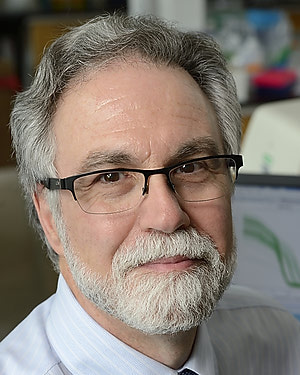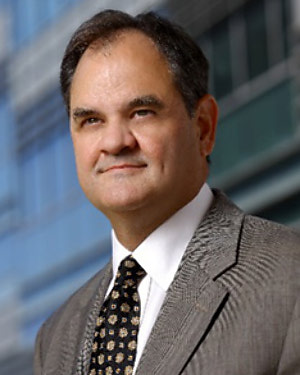Research Lab Results
-
Pablo Iglesias Lab
Investigators in the Pablo Iglesias Lab use analytic tools from control systems and dynamical systems to study cell biology, including biological signal transduction pathways. Our research interests include the ways cells interpret directional cues to guide their motion, regulatory mechanisms that control cell division, and the sensing and actuation that enable cells to maintain lipid homeostasis. -
Guang William Wong Lab
The Wong Lab seeks to understand mechanisms employed by cells and tissues to maintain metabolic homeostasis. We are currently addressing how adipose- and skeletal muscle-derived hormones (adipokines and myokines), discovered in our lab, regulate tissue crosstalk and signaling pathways to control energy metabolism. We use transgenic and knockout mouse models, as well as cell culture systems, to address the role of the CTRP family of hormones in physiological and disease states. We also aim to identify the receptors that mediate the biological functions of CTRPs.
-
James Hamilton Lab
The main research interests of the James Hamilton Lab are the molecular pathogenesis of hepatocellular carcinoma and the development of molecular markers to help diagnose and manage cancer of the liver. In addition, we are investigating biomarkers for early diagnosis, prognosis and response to various treatment modalities. Results of this study will provide a molecular classification of HCC and allow us to identify targets for chemoprevention and treatment. Specifically, we extract genomic DNA and total RNA from liver tissues and use this genetic material for methylation-specific PCR (MSP), cDNA microarray, microRNA microarray and genomic DNA methylation array experiments.
-
Gregg Semenza Lab
The Gregg Semenza Lab studies the molecular mechanisms of oxygen homeostasis. We have cloned and characterized hypoxia-inducible factor 1 (HIF-1), a basic helix-loop-helix transcription factor. Current research investigates the role of HIF-1 in the pathophysiology of cancer, cerebral and myocardial ischemia, and chronic lung disease, which are the most common causes of mortality in the U.S.
-
Dwight Bergles Laboratory
The Bergles Laboratory studies synaptic physiology, with an emphasis on glutamate transporters and glial involvement in neuronal signaling. We are interested in understanding the mechanisms by which neurons and glial cells interact to support normal communication in the nervous system. The lab studies glutamate transport physiology and function. Because glutamate transporters play a critical role in glutamate homeostasis, understanding the transporters' function is relevant to numerous neurological ailments, including stroke, epilepsy, and neurodegenerative diseases like amyotrophic lateral sclerosis (ALS). Other research in the laboratory focuses on signaling between neurons and glial cells at synapses. Understanding how neurons and cells communicate, may lead to new approaches for stimulating re-myelination following injury or disease. Additional research in the lab examines how a unique form of glia-to-neuron signaling in the cochlea influences auditory system development, whether defects in cell communication lead to certain hereditary forms of hearing impairment, and if similar mechanisms are related to sound-induced tinnitus. -
Enid Neptune Lab
Work in the Enid Neptune Lab focuses on topics within the fields of pulmonary and critical care medicine. Our research centers primarily on therapeutic strategies for Marfan syndrome and hepatocyte growth factor signaling in airspace homeostasis. We also conduct research on chronic obstructive pulmonary disease (COPD), with a focus on its mechanisms and potential methods for preventing its progression. Our research within critical care has most recently involved investigating superoxide dismutase 3 dysregulation in neonatal lung injuries.
-
Espenshade Lab
The Espenshade Lab uses a multi-organismal and multidisciplinary approach to understand how eukaryotic cells measure insoluble lipids and dissolved gases. We have chosen cholesterol and oxygen as our model molecules, based on their essential roles in cell function and the importance of their proper homeostasis for human health. -
Landon King Lab
The Landon King Lab studies aquaporins water-specific membrane channel proteins. We hope to understand how these proteins contribute to water homeostasis in the respiratory tract and how their expression or function may be altered in disease states.
-
Laboratory of Airway Immunity
We are interested in understanding how innate immune responses regulate lung health. Innate immunity involves ancient, and well-conserved mediators and their actions regulate the balance between homeostasis and pathogenesis. In the lungs, innate immunity play a critical role in response to environmental exposures such as allergen and ambient particulate matter. My lab focuses on how these exposures can promote aberrant mucosal responses that can drive the development of diseases like asthma.
Principal Investigator
Department
-
Intestinal Na/H Exchangers
Secretory diarrhea is a leading cause of childhood morbidity and mortality in developing countries. While diarrhea can be treated with oral rehydration solution (ORS), inclusion of zinc with oral ORS has been shown to reduce the duration of diarrhea. However, how zinc improves diarrhea is not known. It has been shown that zinc acts as an intestinal epithelial cell basolateral potassium channel blocker of cyclic AMP-mediated chloride secretion. We discovered that zinc also stimulates intestinal sodium and water absorption via the epithelial Na/H exchanger, NHE3. Zinc reverses the effect of cyclic AMP inhibition of NHE3 activity. The effect of zinc on NHE3 cannot be duplicated with other divalent metal ions. It has been well established that Na/H exchanger regulatory proteins are involved in NHE3 regulation. Whether these regulatory proteins are involved in zinc stimulation of NHE3 is a focus of our study. Our goal is to reveal mechanisms to explain how zinc improves diarrhea and to understand the role of zinc in salt and water homeostasis in the gut. Our study will provide a scientific basis to justify the inclusion of zinc in ORS for the treatment of secretory diarrhea.


